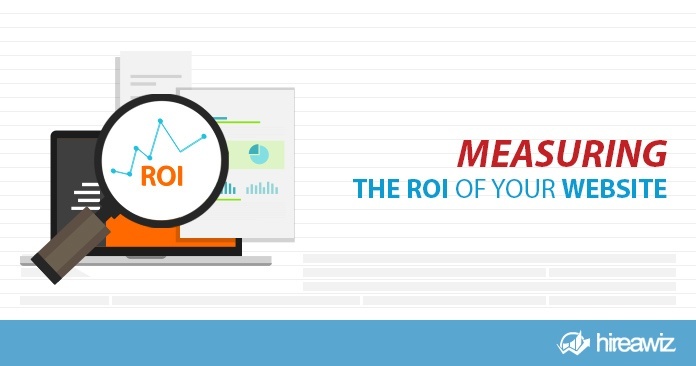There comes a time in your online business journey where measuring the ROI of your website becomes a necessity.
One of the best ways to enhance the chances of success lies in knowing and understanding your numbers.
While this can be wildly complicated sometimes, our intent in this post is to shed some light on why and how to effectively measure your website’s return on investment. (ROI)
Why You Need to Measure Website ROI
It’s hard to try and diagnose why your website and/or business is not producing as well as you’d hoped without a clear view of what the numbers are. Numbers don’t lie.
Getting your head around the raw data and using it to help you strategize and plan your marketing is vital to your success.
Fortunately for us there are mountains of data readily available to us, and most of it is free to access, needing only our time and input.
The first level of this data lies in Google Analytics and Google Webmaster Tools. These will give you more data than you will know what to do with at first, but are essential for people to get started. You can add other third party analytics tools later if you wish.
ROI Defined
Let’s put things in a simple to understand formula. While these calculations can become positively Einsteinian, to start let’s break it down to basics so we can not only understand but effectively use these calculations to make a profitable impact on our businesses.
The basic idea here is the measurement of how much you are earning versus how much you’re spending to do so. This is a calculation of how much you invested into the website, how much return on your investment there has been, and the difference is your return, whether positive or (hopefully not) negative.
Google AdWords explains it very well. (Example intended for paid ads, but the idea remains the same)
“One way to define ROI is:
(Revenue – Cost of goods sold) / Cost of goods sold
Let’s say you have a product that costs $100 to produce, and sells for $200. You sell 6 of these products as a result of advertising them on AdWords, so your total cost is $600 and your total sales is $1200. Let’s say your AdWords costs are $200, for a total cost of $800.
Your ROI is:
($1200 – $800) / $800
= $400 / $800
= 50%
In this example, you’re earning a 50% return on investment. For every $1 you spend, you get $1.50 back.”
Factors Involved with Website ROI
Here are some of the common factors you’ll need to examine in order to come up with a good calculation of your website ROI.
- Traffic – This can emanate from several sources; organic, video, social media, paid and more.
- Conversions – You need to decide what constitutes a conversion for your website; whether that is a purchase, opt-in, phone call, download, video view, online quote or another form of conversion.
- Leads to conversions ratio
- Average sale
- Landing page conversion rates – Measure individual landing pages for best results.
- Bounce rates – Visitors who “bounce” from the site after viewing only one page briefly. Not a factor in the calculation, but a major drag on ROI.
Other items that play a part in how high (or low) your website ROI is are things such as the time frame and size of sample. If you don’t have enough data to make a comparison viable it can give you unreliable numbers, doing you no good. Sometimes it’s better to wait until you have more traffic and conversions so you can produce a trustworthy number.
Similarly time plays a role. Account for seasonal anomalies and promotions.
Average website conversions, with some variation for type are between 2-5%. Again, this will vary somewhat based on the type of site you are running.
Costs to be Factored into Your ROI Calculations
There are costs associated with running your website and business that are an integral part of determining your ROI. Some of these are things like site hosting, costs of goods sold on the site, technical expenses, costs of content marketing (blogging, video production, email marketing, social media), and potential advertising costs.
Multi-Channel Marketing
These days marketing takes place over a multitude of channels, all of which contribute to the traffic and success of your business.
If a lead comes to you via a personal referral, they may eventually purchase from your website, but the site itself may have had little to do with the process. Likewise, they may contact your business in many ways that connect to your website, such as a video, blog post, direct referral, email or other channels.
Accounting for all of these channels should be part of your thinking going forward, as it can provide valuable insight as to the direction of your online marketing efforts.
Now You Know Your ROI – What’s Next?
Once you’ve managed to get your initial number, you’re set to make some changes. Going over this data will give you a clear vision of what needs to happen next. It could be that a certain marketing channel is lacking, and needs help. Maybe people are abandoning the shopping cart, and it needs adjustment. Perhaps it’s your email marketing that needs attention to conversion, or certain pages are exhibiting an unusually high bounce rate.
Now that you have the data in your hands, you can set about making improvements to your website’s ROI.
If you’d like help with measuring and improving the ROI of your website or digital marketing campaigns other matters relating to your website’s conversions, contact our team at (623) 521-1418 or visit our Contact page and we’ll be happy to help!

